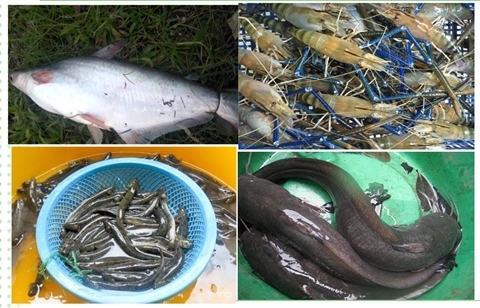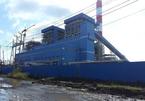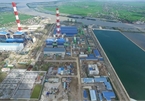Thien said there are communication, exchange and interdependence among habitat types. Aquatic creatures, for example, engage in reproductive migration, and seek food in sea water, fresh water and brackish water areas.

They migrate long distances from Mekong Delta sea area to Mekong’s upper course which creates interdependence between the river and the marine environments. The activities in small areas may lead to the impact on larger geographical areas, or even inter-boundary impacts.
Ca bong lau (Pangasius krempfi) is a freshwater species, but it moves to the sea in certain periods of its life cycle.
After spawning in the middle stream, the eggs drift downstream to the lower Mekong Delta. The fish lives in the East Sea for some time and when it grows to a certain level, it will move to freshwater area and reach southern Laos in May and in June for reproduction in the rainy season.
This is the species with the longest migration paths among Mekong fish.
| Investors of one power plant only show the impacts the plant may have on the area. Meanwhile, there are many power plants on the same river, and separate reports won’t show the accumulative impacts of all the plants to the environment. |
Similarly, ca ban (Pangasius mekongensis) also lives at the estuary of Mekong Delta and migrates back to southern Laos to reproduce. The fish is an important target for fishing industry in the deep-water areas on Tien and Hau Rivers, such as Tan Loc Isle, Vam Nao canal and coastal areas.
Meanwhile, ca ngat (Plotosus canius) can live in three environments of freshwater, brackish and salt water. Their habitats include the freshwater area on Tien and Hau Rivers, the brackish water area at estuaries and coastal areas.
Ca keo (Pseudapocryptes elongatus) is a specialty of Mekong Delta. A research work of the Can Tho University found that the fish migrates to the sea twice a month. Ca keo migrates more in the conditions of low temperature and migrates less when the temperature is high.
According to Thien, environmental impact assessment (EIA) reports mostly show separate environment impacts on limited geographical areas, and therefore, one cannot have an overall view of the problems.
For example, investors of one power plant only show the impacts the plant may have on the area. Meanwhile, there are many power plants on the same river, and separate reports won’t show the accumulative impacts of all the plants to the environment.
The expert pointed out that the when calculating the expenses and benefits of electricity generation units, it is necessary to count in the expenses on social issues and the environment as well.
Under the national seventh power development plan, there will be 12 coal-fired thermopower plants in Mekong Delta.
Meanwhile, GreenID, a science and technology organization, believes that renewable energy projects should be developed in the region instead.
Mai Lan

Social organizations propose to stop licensing new coal-fired thermopower projects
Since the government is pursuing a consistent policy not to sacrifice the environment for economic development, coal-fired thermopower projects will no longer be developed.

Coal-fired power blamed for poor air quality: experts
Experts have accused coal-fired power plants of causing air pollution in Hanoi, noting that they are emitting fine dust during operations. But operators of such plants have rejected the claim, according to local media.
 Ecology expert Nguyen Huu Thien has warned about a series of problems that coal-fired power plants may cause to the Mekong Delta, especially the impact on the ecosystem.
Ecology expert Nguyen Huu Thien has warned about a series of problems that coal-fired power plants may cause to the Mekong Delta, especially the impact on the ecosystem.